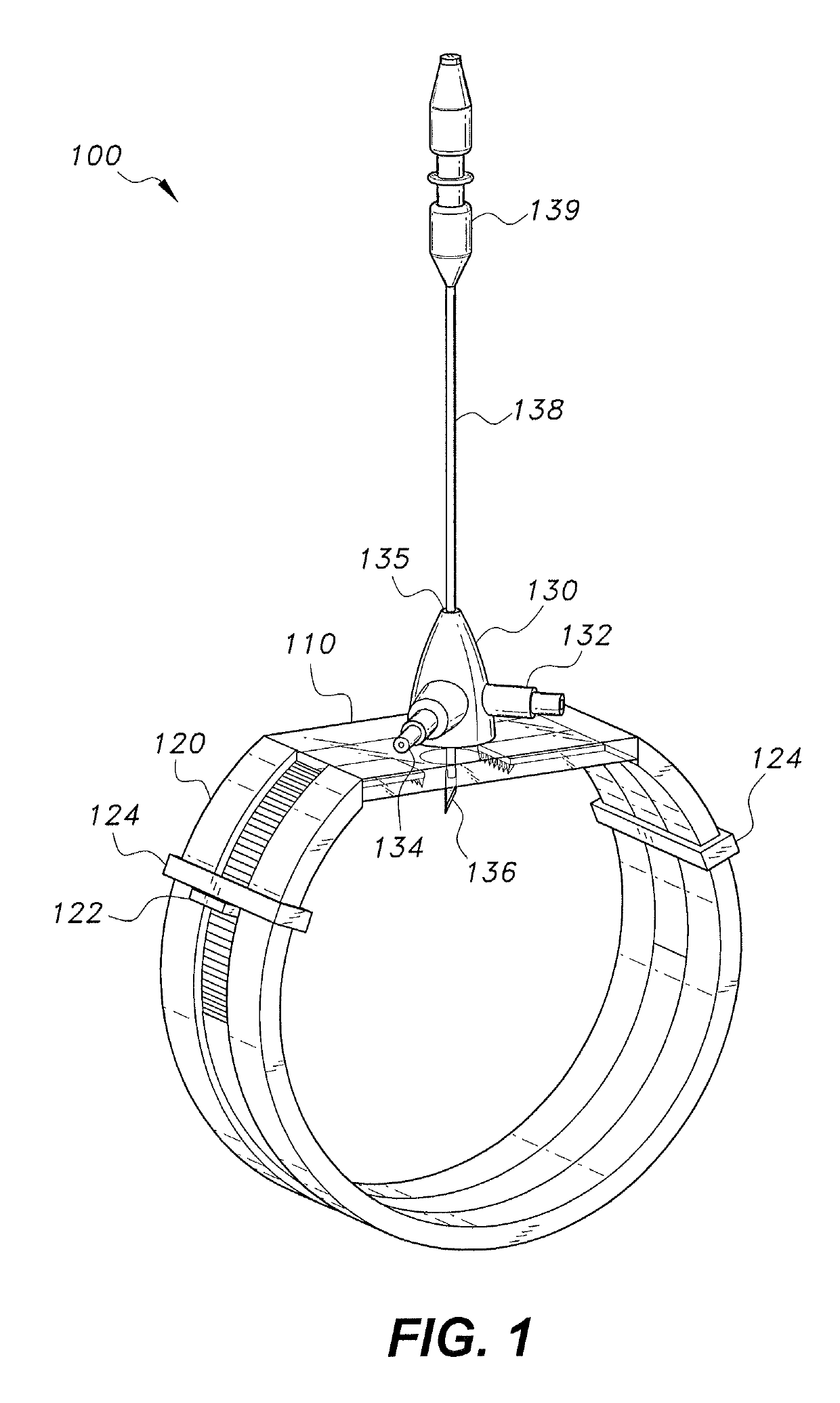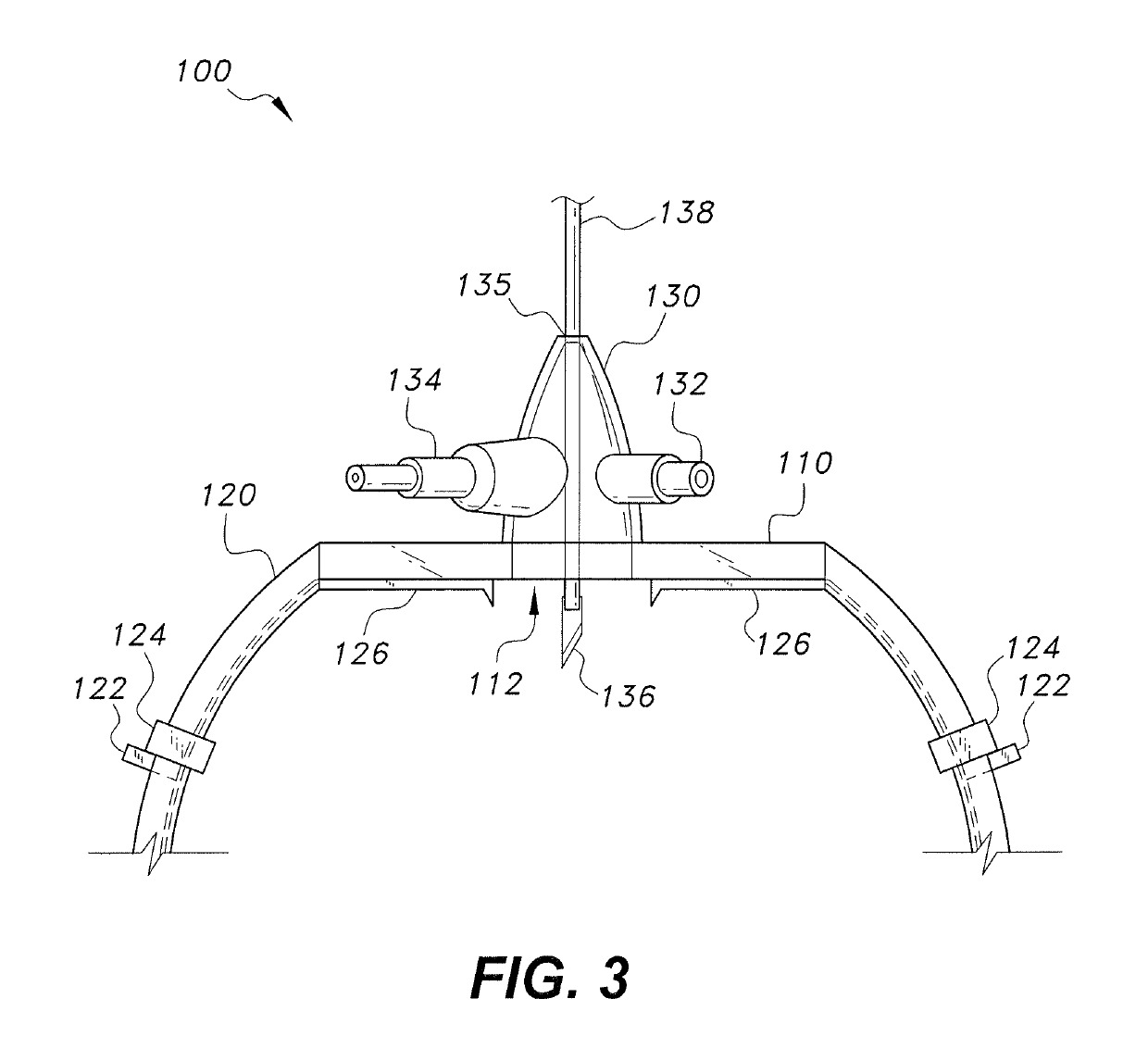Device for sutureless repair of an injured nerve
a technology for sutureless repair and nerves, applied in the field of peripheral nerve repair, can solve the problems of poor sensation recovery, partially recovered motor function, and no functional benefit compared with standard nerve grafts
- Summary
- Abstract
- Description
- Claims
- Application Information
AI Technical Summary
Benefits of technology
Problems solved by technology
Method used
Image
Examples
Embodiment Construction
[0012]As shown in FIGS. 1 and 2, the device 100 for sutureless repair of an injured nerve includes a securement band 120 connected by a transparent membrane 110 to form a loop. The band 120 includes two opposing approximation claws 126 that extend into the region of the transparent membrane 110. An aperture 112 in the transparent membrane 110 is covered by an enclosure 130 having an inlet nozzle 132 and an outlet nozzle 134. An elongate member 138 having a blade 136 on its bottom end extends through an aperture 135 in the top of the enclosure 130. The elongate member 138 has the ability to translate along its length, rotate, and pivot with respect to the enclosure 130.
[0013]The device 100 is held in place by a band 120, which is designed to wrap around a patient's limb. Typically, peripheral nerve trauma will occur to one of a person's appendages, and the band 120 will be dimensioned according to the appendage it is intended to wrap around. For example, a device 100 for use on a pat...
PUM
 Login to View More
Login to View More Abstract
Description
Claims
Application Information
 Login to View More
Login to View More - R&D
- Intellectual Property
- Life Sciences
- Materials
- Tech Scout
- Unparalleled Data Quality
- Higher Quality Content
- 60% Fewer Hallucinations
Browse by: Latest US Patents, China's latest patents, Technical Efficacy Thesaurus, Application Domain, Technology Topic, Popular Technical Reports.
© 2025 PatSnap. All rights reserved.Legal|Privacy policy|Modern Slavery Act Transparency Statement|Sitemap|About US| Contact US: help@patsnap.com



